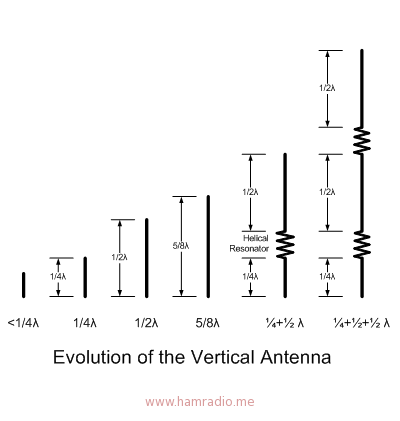Follow along with the video below to see how to install our site as a web app on your home screen.
Note: This feature may not be available in some browsers.
Don't understandAnd why am has low frequency range than fm.
you mean that fm is directional(not omni directonal)FM radio (high frequency) travels in a straight line. So it does not bend beyond the horizon.
If you want a "keep it simple stupid" answer. yes you are right.thanks.now consider two things
1)am(low frequency) antenna are taller and fm(high frequency) antenna are shorter
2a) am haev low wavelength so it tend to follow the curvature and t has difrracted through object due it low wavelength then why the antenna need to be taller
ab) fm is more like light does not bend.then the antenna should not not be shorter becuase it cannot bend.so its supposed to talller(like point to point communication)
is my thought bad


If you mean why is the AM band at a low frequency and the FM band at a much higher frequency, it has to do with history and bandwidth. The first commercial broadcasts were AM since AM is very simple to generate and receive. They were done at low frequency because it was easier to build low-frequency transmitters and receivers and the low frequency wave had a long reception distance as explained in post #8. The bandwidth of the AM signal was also selected to be low (adequate for voice but with corresponding low music fidelity) so many stations could be crammed into the 1 MHz width of the AM band........................ And why am has low frequency range than fm.
A side note about long distance transmission of AM signals: When I was a kid in Wisconsin I remember that most nights I could clearly pick up KWKH in Shreveport,
OKAntenna are set up to be friendly with a particular wave length. There is a natural resonance when the wave length and the length of antenna are in agreement... are related to each other.
Half wave and quarter wave - Yesi.e 1/2, 1/4, 1/8 etc.
You are off by a factor of 10 here.From memory, the speed of light is 3 multiplied by 10 to the eighth power or 30,000,000 meters per second.
When you divide by the frequency (say 25,000,000 Hz or 25 to 10 by power 6 or 25 MHz... The antenna for a one wave length is 30 over 25 or 1.2 meters. The wave length of a 3 MHz signal is 12m long.
...
The speed of light is 300,000,000 metres per second, (3x10^9).
So 3Mhz has a wavelength of 100 metres.
JimB
The way I rember it is that 150MegHz has a wavelength of 2 meters
...Your way is more 'radio ham' as the 2m amateur band is 144-146MHz (in the UK - don't the USA go to 148?).
